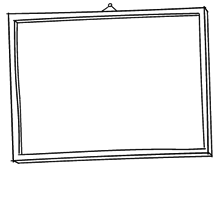Core Concepts
A picture is a blend of perception and imagination, serving as a medium to represent objects not physically present.
Abstract
When analyzing what constitutes a picture, it becomes evident that the distinction between perception and imagination plays a crucial role. Perception involves the limitations of sensory data, where one can only see what is physically present. On the other hand, imagination allows for envisioning objects that are not currently in view. The combination of both perception and imagination forms the essence of a picture, acting as a representation that triggers imaginative interpretations. The medium used to depict an object influences how it is imagined, highlighting the unique strength of pictures in conveying meaning through interpretation.
Customize Summary
Rewrite with AI
Generate Citations
Translate Source
To Another Language
Generate MindMap
from source content
Visit Source
ralphammer.com
What is a picture? - Ralph Ammer
Stats
7219 Views
Quotes
"A picture is an object that is here and because of its look makes us imagine something else that is not here."
"Our choice of medium and form influences how we imagine something."

Deeper Inquiries
How does the interplay between perception and imagination impact our understanding of art beyond pictures?
The interplay between perception and imagination goes beyond just pictures and deeply impacts our understanding of art. When we perceive something, we are limited to what is actually present in front of us, while imagination allows us to envision things that are not physically there. In art, this dynamic interaction between what is seen and what is imagined opens up a realm of possibilities for artists to express their creativity. By combining elements of perception with imaginative interpretations, artists can create works that transcend mere representation and delve into deeper emotional or conceptual realms.
Could an overemphasis on realism in pictures hinder their ability to evoke imaginative interpretations effectively?
An overemphasis on realism in pictures could indeed hinder their ability to evoke imaginative interpretations effectively. While realistic portrayals may showcase technical skill and attention to detail, they often leave little room for viewers to engage their imaginations. When everything is depicted exactly as it appears in reality, there is less ambiguity or open-endedness for viewers to interpret the artwork in different ways. Imagination thrives on suggestion, abstraction, and interpretation - qualities that can be stifled by a strict adherence to realism.
How does technology like Augmented Reality challenge traditional notions of visual representation in art?
Technology like Augmented Reality (AR) challenges traditional notions of visual representation in art by blurring the lines between the real world and digital creations. AR allows virtual images to seamlessly integrate with our physical environment, creating new possibilities for artistic expression. With AR glasses or devices, users can experience artworks that interact with their surroundings in innovative ways that were previously impossible. This challenges the idea of static representations by introducing dynamic elements that respond to real-world stimuli, transforming how we perceive and interact with art forms traditionally confined within physical boundaries.
0
